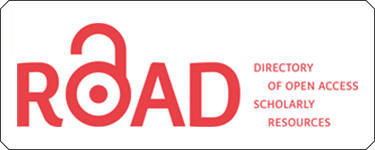Derivation and Inflection Affixes of English Words in Online News Headlines on Thejakartapost.com Website: A Morphological Study
Abstract
This study examines the use of derivational and inflectional affixes in English news headlines published on The Jakarta Post website. The morphological analysis method is used to identify the types of affixes used and word formation patterns in the context of online media. The data collection technique was carried out using the observe and note method, where data was obtained by browsing and recording news headlines found on the site. This analysis uses the distribution method with an advanced technique in the form of Direct Element Sharing (BUL). Based on the results of the analysis, 214 words were found, with 60 affixed word data, consisting of 21 words through the derivation process and 39 words through the inflection process. The research findings show that derivational affixes, such as prefixes ("ir-") and suffixes ("-es", "-ing"), as well as inflectional affixes, such as tense markers and plural suffixes ("-s", "-es"), are often used in news headlines to influence the structure and meaning of words. The use of these affixes plays an important role in creating concise, informative, and interesting headlines for readers. In addition, this finding reveals that the choice of affixes can affect the interpretation of news and the effectiveness of communication in conveying information.
Keywords
Full Text:
PDF (Bahasa)References
Abdullah, A., Djou, D. N., & Masie, S. R. (2020). Afiks Infleksi dan Derivasi dalam Bahasa Gorontalo. Jurnal Ideas: Pendidikan, Sosial, dan Budaya, 6(4), 397-414.
Bauer, L. (1983). English Word Formation. London: Cambridge University Press.
Chandra, Y. N. (2016). Morfem Derivasional dalam Bahasa Mandarin. Paradigma, 3(1), 78–88. https://doi.org/10.17510/PARADIGMA.V3I1.35
Laksemi, I. A. G. C. D. (2020). The Morphological Process of English Derivational Adjective. Journal of Linguistics, 1(2), 7–11. https://doi.org/10.47532/JIC.V1I2.11
Mahsun, MS. 2005. Metode Penelitian Kualitatif. Bandung: Rosdakarya
Mutaqin, I., dkk. (2022). Derivasi dan Infleksi Pada Rubrik Edukasi Kompas.com. Transformatika: Jurnal Bahasa, Sastra, dan Pengajarannya, 6(2). https://doi.org/10.31002/transformatika.v6i2.6730
Mustikasari, G., dkk. (2022). Derivasi Verba Denomina Bahasa Indonesia Pada Website Berita Online (Kajian Morfologi). Fon: Jurnal Pendidikan Bahasa dan Sastra Indonesia, 18(2). https://doi.org/10.25134/fon.v18i2.5147
Nuryadi. (2019). Kata dan Proses Pembentukan Kata dalam Bahasa Inggris dan Bahasa Indonesia: Suatu Analisis Kontransitif. Makna: Jurnal Kajian Komunikasi, Bahasa dan Sastra, 4(1), 114-127.
Sudaryanto. (2018). Metode dan Aneka Teknik Analisis Bahasa. Yogyakarta: Sanata Dharma University Press
Suyatno, S. (2009). Proses Morfologis Morfem Dasar Terikat Bahasa Indonesia. Eprints Undip. http://eprints.undip.ac.id/6238/
Verhaar, J. W. M. (2008). Asas-asas Linguistik Umum. Yogyakarta: Gadjah Mada University Press.
Wiyatasari, R. (2013). Pembentukan Kata Secara Derivasional dalam Bahasa Jepang (Suatu Kajian Morfologi). Izumi, 2(2). https://doi.org/10.14710/IZUMI.2.2
Refbacks
- There are currently no refbacks.













